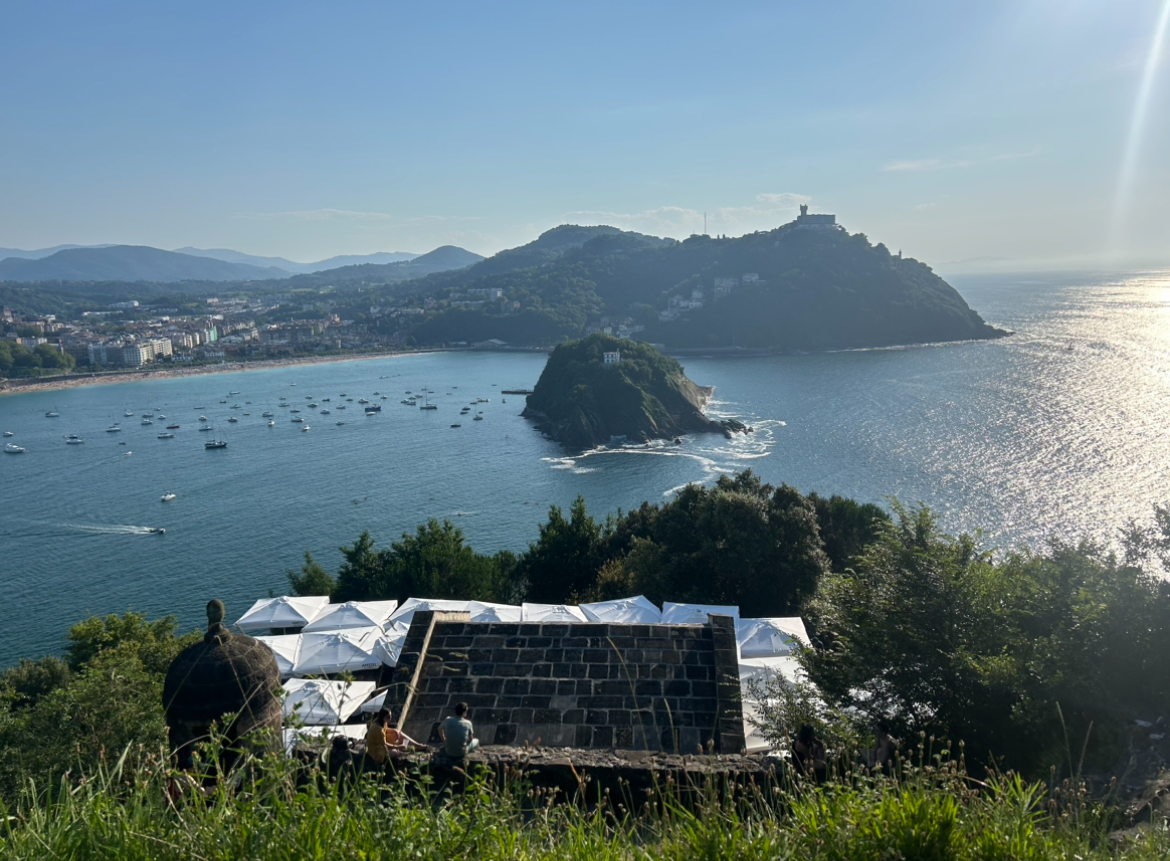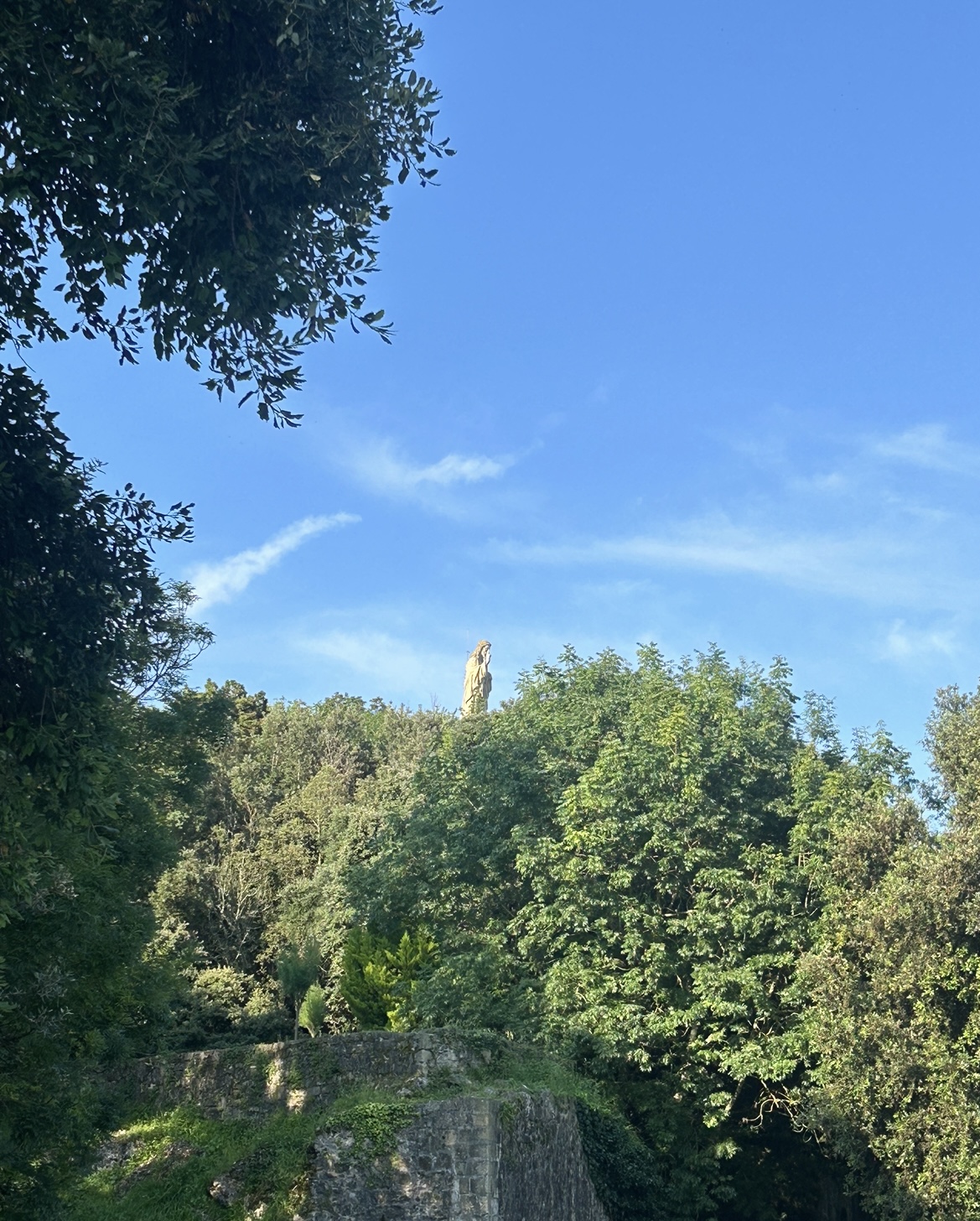Walk to Mount Urgull – Dia 8
Shaun Fitzpatrick
The Basque country seems to amaze me every day a little more. Although it has only been 9 days since we arrived, I have felt like I have been here forever. I have gotten used to the food, the day-to-day life, and most importantly the culture. I had never traveled to somewhere like San Sebastian. I had always been in the same or close to the same culture, and there was not much new. Now that I am in San Sebastian, it is life-changing to see how other people live compared to our culture. This is a strange situation because I do not speak either of the two languages that are most commonly spoken here, but I have found a way every time to still connect with the locals whether it is with restaurant servers, people at the beach, or my new friends that I made at Lacunza. This was probably one of the most beautiful days that we have had in San Sebastian. During this day I enjoyed the weather as much as I could. I went to the beach after class, got food, climbed Mount Urgull, and went back to the beach after dinner.
Although it was a steep and sweaty climb, the views when we were up there made every step worth it. Prof. Julian always said that San Sebastian was unique from the rest of Spain, and I always just thought that it was because it taxes itself differently and performs almost all the federal duties to its province without interference with the rest of Spain. The history of San Sebastian and the Basque Country might be the most fascinating part of San Sebastian. Prof. Julian explained that the Basque Language was almost lost until a group of collegiate students started teaching each other again in the 1960s, which explains why it is still very used among locals currently. The Professor went on to explain how there was a dictator named Francisco Franco and how he ruled for almost 40 years and eventually died of old age. During Franco’s dictatorship, there was a civil war that came to an end in 1939. After a few decades of Franco’s dictatorship started, there was a terrorist group formed named ETA. Professor Z mentioned that the group was abolished recently in either 2017 or 2018. From what I remember the group started because they did not want a dictatorship, so they started murdering people to make their voices heard. In the end, a lot of people died. In the end, Franco passed and Spain became more of a democracy. Professor Z also mentioned how much different the prison system is here. He mentioned that they believe in reforms and they believe in Rehabilitation for their inmates, which for me was a shocker since the U.S. is different. I started to question how many people would escape if the U.S. had the same system. The professor then mentioned that there was a famous prisoner who escaped prison since he got released on the weekend and never went back. This man escaped prison over 10 times after being convicted . This is extremely impressive because he was in his 60s, so to have that courage at that age is impressive. I believe that for certain cases inmates shouldn’t be given permission since they killed someone. Although this was involuntary, he still harmed someone.
We were told by Professor Z throughout this trip that the Basque Region separates themself from the rest of Spain; moreover, after today’s history lesson we now can put two and two together. The Basque region’s history of violence with the rest of Spain furthers the reasoning of isolation from the capital of Spain. Today on July 9th, France will be playing Spain in the Euro cup de futbol creating curiosity for my classmates and I for who the Basque will support.
It is very fascinating how the Spanish culture idolizes the rehabilitation method versus the United States performing retribution, meaning they believe in an eye for eye. This is a topic that I discuss a lot at the university, and as Profesor Z mentioned the United States has the highest incarceration rate per capita in the world. The US also has a high rate of recidivism meaning that the criminals often reoffend after their first conviction. Deeming the United States to have an ineffective method of incarceration. Although Spain has some flaws with the leniency of incarcerating citizens, they prove to be superior overall with their process.
The U.S. incarcerates about 639 people per 100,000, much higher than Spain’s 114 per 100,000. Recidivism rates also differ significantly: in the U.S., 76.6% of released prisoners are rearrested within five years, compared to Spain’s 30-40%. This shows the stark contrast in their criminal justice systems. These drastic statistics are very interesting to me as a Criminal Justice major. I intend to make a change when I am older and potentially help improve the United States corrections and law enforcement systems. It is very eye-opening to see how other nations and cultures address such important aspects of society.
Another angle of the Playa de Ondarreta


(There was no complaining and pure enthusiasm on this hike)
Finally, experiencing Spanish culture and understanding why they have a longer lifespan and healthier lifestyle has been a significant takeaway for me. I often emphasize that I wish the U.S. could have a more affordable and healthier food system. In Spain, much of the food is natural and unprocessed, unlike in the U.S. Unfortunately, this issue is currently out of the control of Americans, but I hope that with progress, it can be addressed and reformed.
